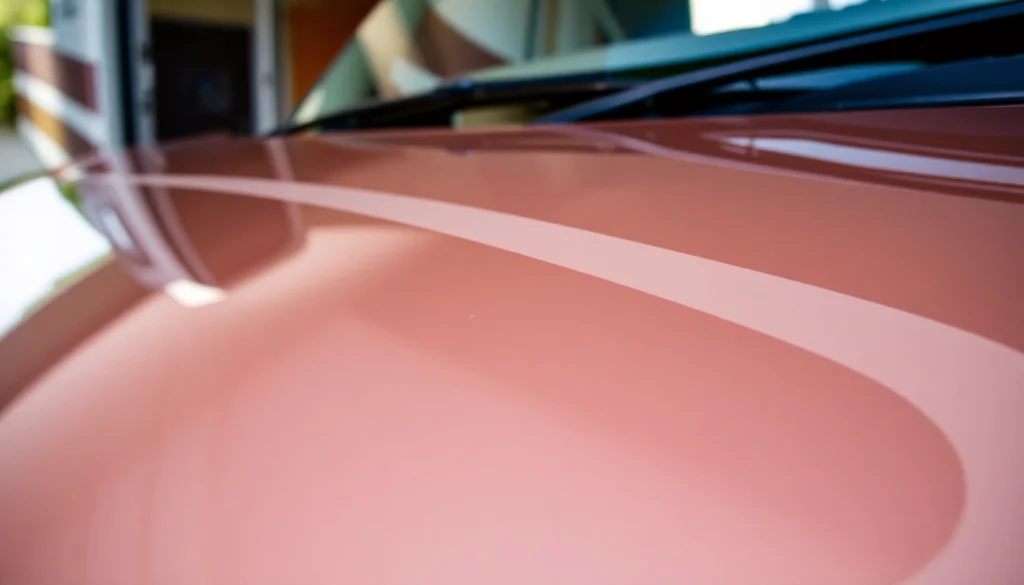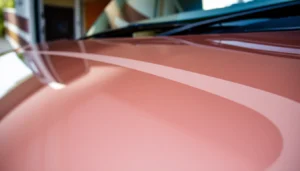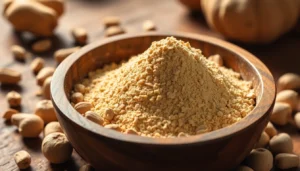
Introduction to RV Polishing Sealants: Protecting Your Mobile Investment
Owning a recreational vehicle (RV), whether it’s a motorhome, campervan, or caravan, entails maintaining its appearance and preserving its value. One of the most effective ways to safeguard your investment is through the application of a high-quality Wohnmobil Politursiegelung. This professional-grade sealing process provides a durable, protective layer over the vehicle’s exterior, defending it against weathering, UV damage, and dirt buildup. In this comprehensive guide, we delve into the essentials of RV polishing sealants, offering insights into selection, application, and maintenance to achieve and sustain a stunning, long-lasting finish.
What is an RV Polishing Sealant?
Understanding the Core Concept
An RV polishing sealant is a specialized protective coating designed for the exterior surfaces of motorhomes, campervans, and caravans. Unlike simple wax or traditional polish, a sealant forms a chemical bond with the vehicle’s surface, creating a resilient, hydrophobic barrier that repels water, dirt, and contaminants. This layer enhances the gloss of the paint or gelcoat, making the vehicle look newer and brighter while significantly reducing the frequency of intensive cleaning and polishing.
Components and Types of Sealants
Modern RV sealants are often based on advanced polymers, such as SiO2 (silicon dioxide), or hybrid formulations that combine inorganic and organic materials. Among the popular options are ceramic-based sealants which boast superior hardness and water-repellent properties. Depending on the formulation, RV sealants can be easy-to-apply liquids, sprays, or wipe-on coatings that cure to form a high-gloss, durable film.
To explore innovative sealing options, consider the benefits of specific products available on the market, such as Wohnmobil Politursiegelung that promises prolonged protection and enhanced surface gloss.
Advantages of Professional RV Sealants
Enhanced Durability and Protection
Professional sealants provide a much longer lifespan compared to traditional waxes, often protecting the surface for 1-3 years depending on use and environmental factors. They offer remarkable resistance to UV rays, which can cause fading and chalking, as well as acid rain, bird droppings, and road salts.
Outstanding Aesthetic Impact
The gloss and clarity achieved through professional sealing are unparalleled. The high shine accentuates the colors and contours of your RV, giving it a freshly detailed look that can last for months.
Reduced Cleaning Effort and Costs
With a robust protective layer, dirt is less likely to adhere strongly, making routine cleaning more straightforward and less abrasive. This not only saves time but also minimizes the risk of surface scratches.
Environmental Benefits
Because high-quality sealants deter water and dirt from sticking, fewer aggressive chemicals and abrasives are needed for cleaning, aligning with eco-friendly practices.
Choosing the Right RV Sealant
Market Comparison of Leading Products
The market offers an array of sealants tailored for RV surfaces. Leading brands such as Sonax, Nigrin, and modern ceramic spray coatings provide varying degrees of protection and ease of use. For instance, Sonax XTREME Ceramic Spray offers up to four months of hydrophobic protection, ideal for quick, effective sealing.
Comprehensive reviews and user testimonials often highlight the durability, gloss, and ease of application as key factors to consider when selecting a product.
Materials and Compatibility
Ensure the sealant is compatible with your RV’s surface material—gelcoat, painted metal, or plastics. For gelcoat and fiberglass surfaces, ceramic-based products like Power Sealer deliver optimal results, while special formulations are available for painted surfaces.
Factors Influencing Choice
- Age and condition of the RV’s surface
- Desired longevity of protection
- Ease of application and curing time
- Environmental exposure levels
For older vehicles with surface imperfections, combining polishing with a sealant like Power Polish and subsequent sealing enhances both cosmetic and protective qualities.
Application Process of RV Politursiegelung
Preparation Steps
Proper preparation is critical for optimal results. Begin with thorough cleaning using a dedicated RV cleaner such as BCC Power Cleaner to remove dirt, grime, and any previous wax residues. Dry the surface completely to prevent water spots.
For surfaces with scratches or oxidation, polishing with a high-quality Polierpuck or Polierschwamm followed by a deep cleaning session will create an ideal canvas. Ensure the surface is smooth, clean, and cool before application.
Applying the Sealant
Use an appropriate application tool—microfibre applicator, foam pad, or polishing machine depending on the product’s instructions. Spread a thin, even layer across the vehicle surface, working in small sections at a time.
For instance, the Boat & Caravan Care Starterset with a Poliermaschine simplifies the process for those preferring machine application, ensuring consistency and efficiency.
Drying and Curing
Allow the sealant to cure as per the manufacturer’s recommendations, which can range from a few hours to overnight. Avoid exposing the surface to water or heavy contaminants during this period for maximum durability.
After curing, buff lightly with a clean microfibre towel for an ultra-glossy finish. Routine maintenance involves gentle washing with pH-neutral products and periodic reapplication of the sealant to sustain performance.
Common Challenges and Expert Solutions
Applying Sealant on Difficult Surfaces
Surfaces with residual contaminants or oxidation can hinder adhesion. Using a dedicated cleaner, like the BCC Power Cleaner, ensures a pristine surface prior to sealing.
Achieving a Uniform Coating
Uneven application often results in streaks or patchiness. Employing a high-quality applicator and working methodically in small sections prevents this problem.
Fixing Mistakes Post-Application
If streaks or unevenness appear, gently wipe with a microfibre cloth dampened with sealing spray or water, then buff to restore uniformity.
Maintaining Sealed Surfaces
Regular washing with non-abrasive, pH-neutral shampoos and avoiding automatic brushes will help prolong the sealed surface’s integrity. Reapply sealant approximately once every 1-3 years depending on exposure.
Long-Term Care of Your RV after Sealant Application
Routine Maintenance and Cleaning
Stick to gentle cleaning products like BCC Towels Vorteilspack and microfiber towels for wiping down the surface. Avoid abrasive compounds, which can damage the sealant layer.
Protection Against Weather and Environmental Factors
Parking in shaded areas, using cover during harsh weather, and applying additional protective coatings, like MARINE SEALANT MS-3000/60, enhance longevity.
Periodic Inspection and Re-Sealing
Regularly inspect the surface for signs of wear, such as water spot buildup or loss of shine. A quick reapplication of the sealant or sealing spray can reinforce the protective layer.



